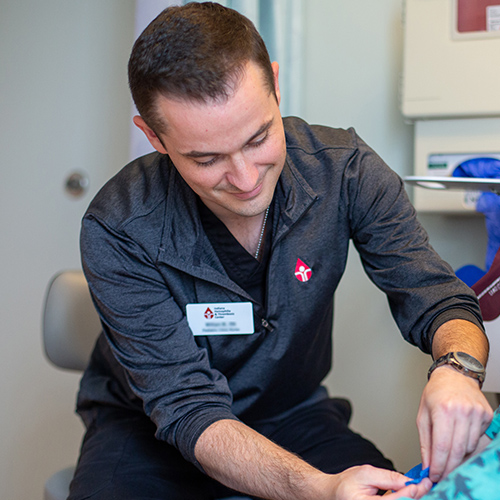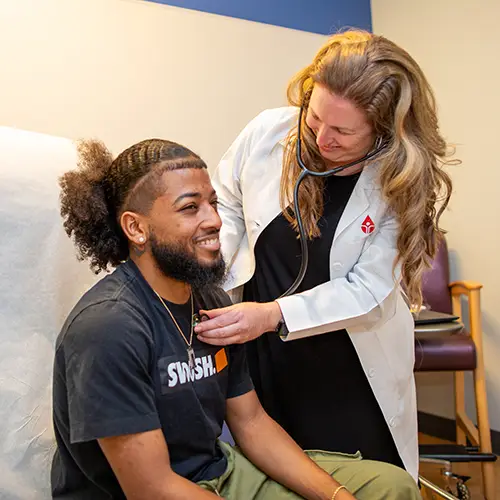- Home
- Gene Therapy
Gene Therapy
In hemophilia, patients can have unexpected or prolonged bleeding because of a missing or low clotting factor in the blood. To increase the factor level and lower the number of bleeding episodes, patients often use factor product or another form of medicine taken by needle.
These treatments can be expensive and time consuming. Gene therapy is an alternative that adds a working copy of the gene. This copy tells the body how to make the missing factor on its own.
The working gene is created in a lab and packaged in a vector – something that will deliver the gene to the body’s cells. In gene therapy, a virus is used as the vector because it’s easy for viruses to enter cells.
When a patient undergoes gene therapy, a healthcare provider gives the vector through an IV. The vector delivers the gene to the liver, where it starts to make the needed clotting factor protein. If gene therapy is successful, the patient can stop regular factor or nonfactor prophylaxis.
Benefits of Hemophilia Gene Therapy
Patients who use prescribed factor products and other types of hemophilia medicines often have to adjust their daily or weekly routines because of time-consuming treatments. These treatments can be expensive.
If a patient undergoes successful gene therapy, their body will produce the missing factor on its own without these products. Usually, patients will still need factor infusions for injuries and surgeries.
Ongoing Follow-Up
Once a patient undergoes gene therapy, they will need frequent visits for blood tests. These blood tests are critical for monitoring factor levels and liver health. Most patients receiving gene therapy will need steroids for weeks to months to prevent the body from rejecting the new gene. If patients are unable to commit to weekly blood test monitoring for at least 3-6 months, they should wait for a time when they are able to make that commitment. There is currently no way to give a second dose of gene therapy if the first dose fails – so catching problems early is critical.
Understanding Gene Therapy’s Limitations
Gene therapy is not a cure for hemophilia. It won’t change the fact a patient has the condition. In fact, a patient who undergoes successful gene therapy can still pass the hemophilia gene on to their children. The factor levels achieved by gene therapy vary depending on the product.
Gene therapy will not work for everyone, and it may not last forever. A patient’s ability to produce factor can change over time. The body’s immune system might identify and eliminate the altered cells. The cells can also naturally die off over time and can impact a patient’s ability to undergo future gene therapy. Gene therapy might not work in children due to their growing and changing bodies.
IHTC’s Approach to New Treatments
The IHTC often participates in clinical trials for new treatment, including gene therapy. Our healthcare team cautiously considers each new therapy with patient safety as top priority. We also work with the hemophilia community to share experiences and report successes and concerns. Patients are encouraged to speak with their care team if they are interested in information about gene therapy or other advances in hemophilia treatment.
Appointments
(317) 871-0000
877-CLOTTER (877-256-8837)









